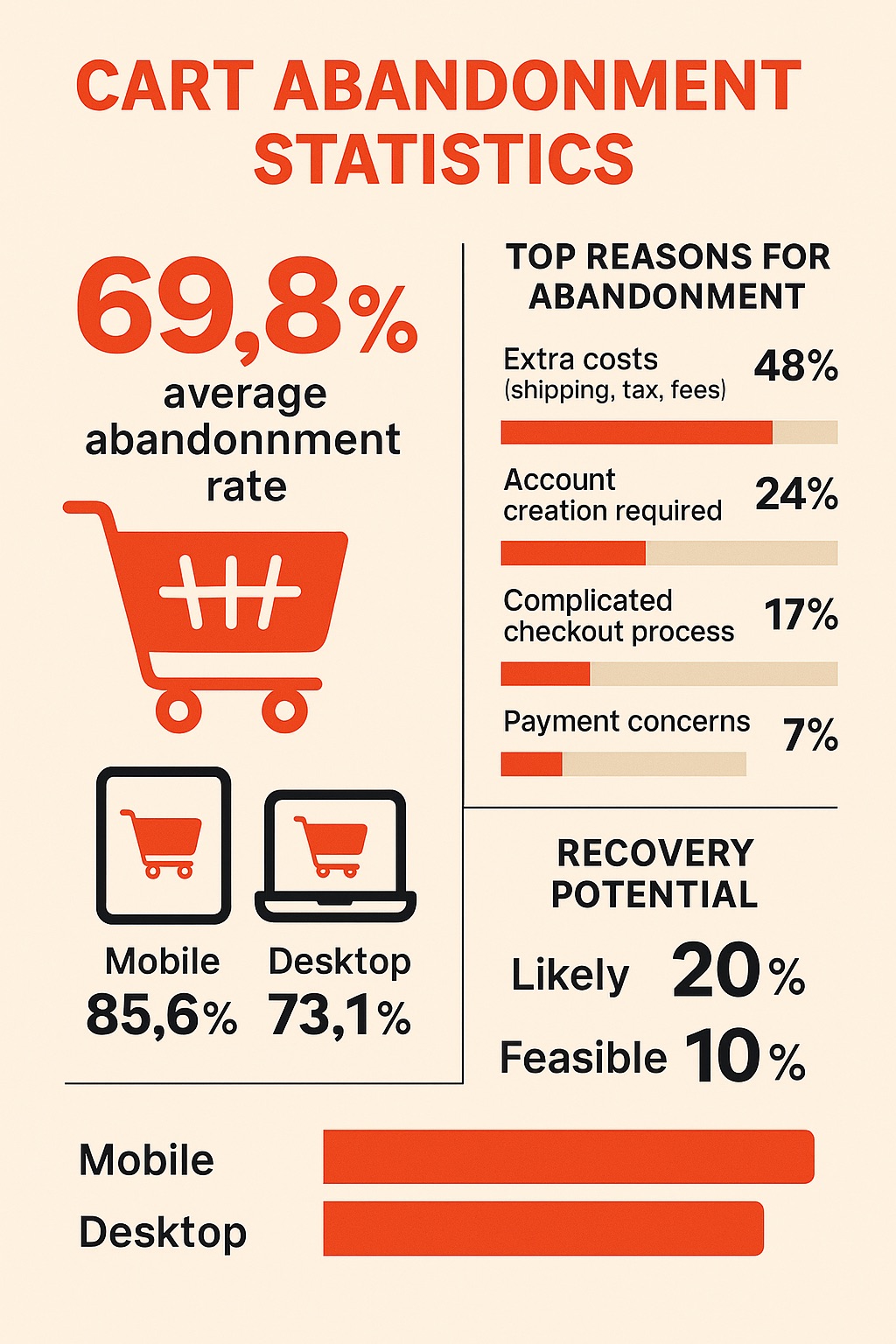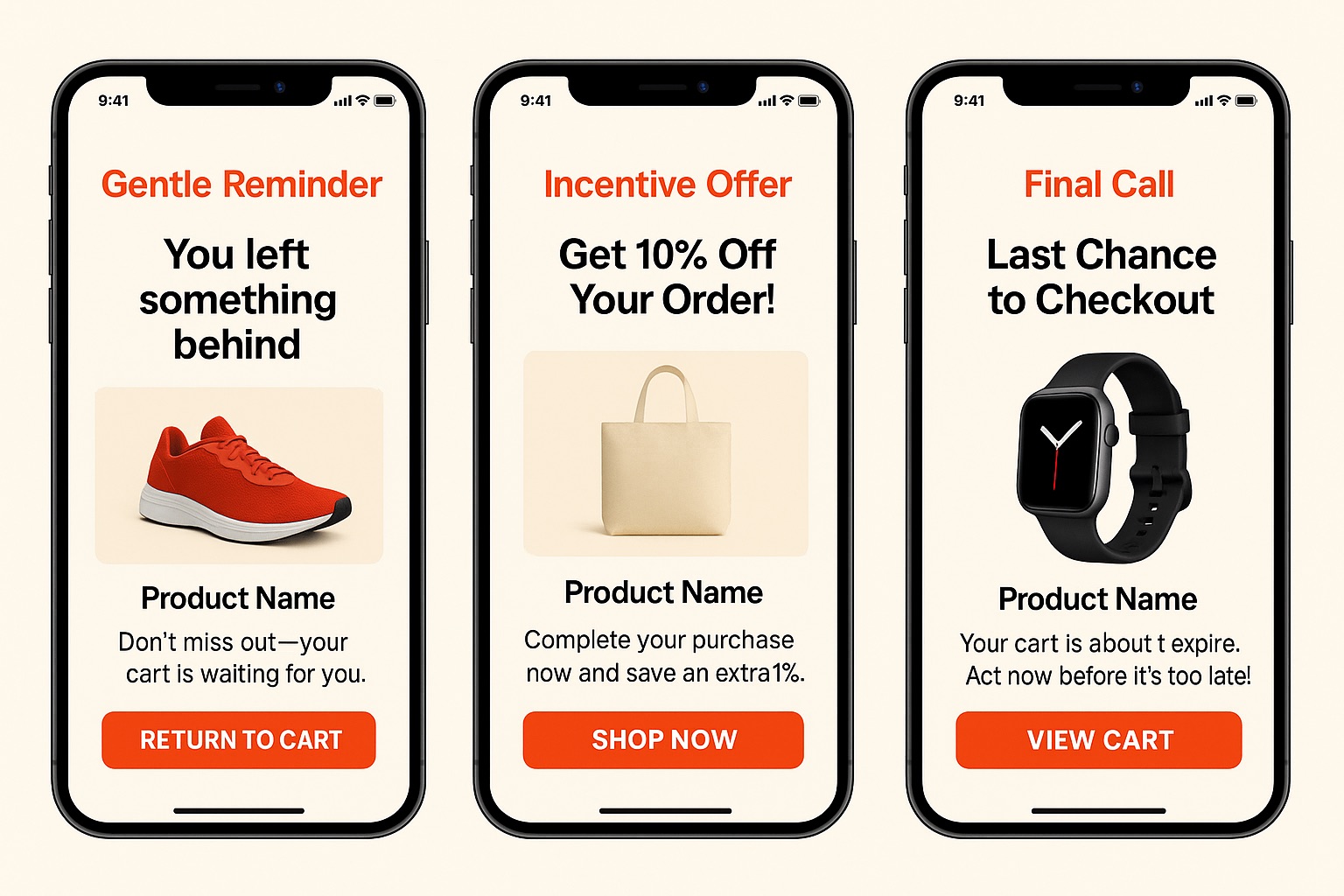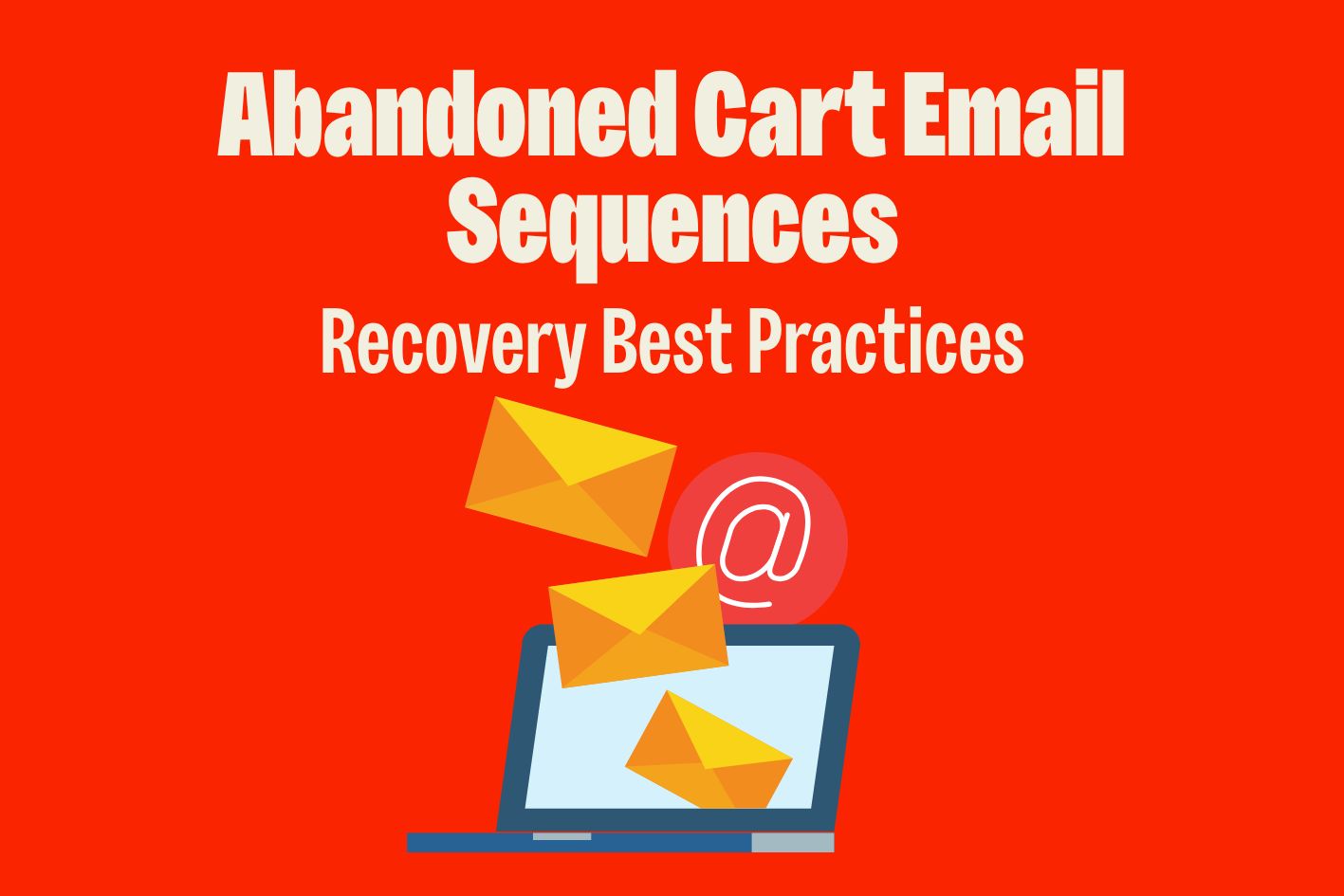Cart abandonment represents one of the most significant revenue leakage points in eCommerce, with nearly 70% of potential customers walking away before completing their purchase. However, this challenge also presents one of the highest-impact opportunities for revenue recovery through strategic email sequences.
The businesses that master abandoned cart email recovery don’t just send generic “you forgot something” messages. They deploy sophisticated, behavioral-triggered sequences that understand customer psychology, respect buying preferences, and systematically address the reasons behind cart abandonment.
Table of Contents
The Cart Abandonment Challenge in eCommerce
Understanding the scope and root causes of cart abandonment forms the foundation for building effective recovery strategies. The statistics reveal both the challenge’s magnitude and the opportunity for businesses that implement proper recovery systems.
Cart Abandonment Statistics 2024
Average abandonment rate: 69.8% across all industries – This means only 3 out of every 10 customers who add items to their cart actually complete the purchase, leaving massive revenue potential on the table.
Mobile abandonment rates: 85.6% (27% higher than desktop) – The mobile shopping experience creates additional friction points that compound traditional abandonment triggers.
Revenue recovery potential: 10-15% of abandoned carts through email sequences – Properly executed recovery campaigns consistently bring back one in eight abandoned customers, representing millions in recovered revenue for larger retailers.
Why Customers Abandon Carts
Effective recovery emails address the specific reasons customers abandon their purchases, rather than using generic messaging that ignores underlying concerns.
Unexpected shipping costs: 60% of abandoners cite this reason – Hidden fees revealed at checkout destroy purchase intent and create negative brand experiences that extend beyond the immediate transaction.
Account creation requirements: 35% abandon rather than register – Forced registration represents an unnecessary barrier that prioritizes data collection over conversion optimization.
Complicated checkout process: 26% find process too lengthy – Multi-step checkouts, excessive form fields, and confusing navigation create abandonment opportunities at every stage.
Security concerns and payment trust issues: 19% don’t trust site – Inadequate security signals, unfamiliar payment options, or poor site design create hesitation that prevents purchase completion.
Abandoned Cart Email Sequence Strategy

Strategic email sequences balance recovery urgency with customer respect, gradually increasing persuasion intensity while providing value at each touchpoint. The most successful campaigns follow proven timing and messaging frameworks that maximize recovery without damaging customer relationships.
Optimal Timing for Maximum Recovery
Email #1 (1-2 hours): Highest open rates, gentle reminder approach – This timing catches customers while purchase intent remains strong but before they’ve completely moved on or made alternative purchasing decisions.
Email #2 (24 hours): Balanced urgency with consideration time – Provides sufficient reflection time while maintaining relevance, particularly effective for higher-consideration purchases.
Email #3 (72 hours): Final recovery attempt with stronger incentives – Represents the last high-probability recovery opportunity before customer attention shifts permanently to other priorities.
Email Frequency and Sequence Length Analysis
3-email sequences: 15-20% average recovery rate – This approach maximizes recovery while maintaining manageable complexity and avoiding customer fatigue.
4+ email sequences: Diminishing returns, higher unsubscribe risk – Additional emails typically generate minimal incremental recovery while increasing the likelihood of unsubscribes and spam complaints.
Seasonal adjustments: Holiday shopping behavior modifications – Peak shopping periods require adjusted timing and messaging to account for increased purchase urgency and competitive pressure.
5 High-Converting Abandoned Cart Email Templates
Each email in a recovery sequence serves a specific psychological purpose, progressively addressing different customer concerns while building toward purchase completion. These templates represent the most effective approaches based on extensive testing across multiple industries.
1. The Gentle Reminder (Email #1)
Subject line: “Forgot something in your cart?”
This initial touchpoint establishes contact without applying pressure, testing genuine purchase interest while building trust for subsequent communications.
Simple product reminder with clear imagery helps customers quickly recall their intended purchase and rebuilds the shopping context that existed at abandonment.
Single prominent CTA button without pressure tactics makes purchase completion effortless while avoiding aggressive sales language that creates resistance.
No discount or urgency language – builds trust first demonstrates respect for customer autonomy and positions subsequent offers as genuine value rather than desperate sales tactics.
2. The Incentive Offer (Email #2)
Subject line: “Complete your purchase and save 10%”
The second email introduces value-based incentives that address price sensitivity while maintaining the relationship established in the first contact.
Small discount (5-15%) or free shipping offer overcomes price objections without training customers to expect discounts for future purchases.
Social proof elements: reviews, ratings, testimonials address trust concerns and provide third-party validation that supports purchase decisions.
Limited-time offer to create gentle urgency introduces scarcity psychology without creating aggressive pressure that damages customer relationships.
3. The Final Call (Email #3)
Subject line: “Last chance – your cart expires soon”
This concluding email represents the final recovery opportunity and justifies stronger persuasion tactics through genuine urgency.
Stronger urgency language with countdown timers creates legitimate scarcity that motivates immediate action while signaling the end of the recovery sequence.
Alternative product recommendations for consideration provides additional purchase options that might better match customer preferences or budget constraints.
FAQ section addressing common purchase concerns proactively handles objections that might prevent conversion, particularly security and return policy questions.
4. The Value-Add (Alternative Approach)
Educational content related to abandoned products shifts focus from selling to helping, building expertise authority while maintaining engagement.
Product usage tips and benefit highlights reinforces value propositions that may not have been clear during the initial shopping experience.
Customer testimonials and success stories provides social proof through relatable use cases that demonstrate real-world product value.
Soft-sell approach focusing on value rather than urgency appeals to customers who resist traditional sales tactics while maintaining purchase consideration.
5. The Win-Back (Post-Sequence Follow-up)
Broader product recommendations based on browsing history expands conversation beyond abandoned items to maintain relationship and identify alternative purchase opportunities.
Newsletter signup incentives for continued engagement converts non-purchasers into marketing contacts for future conversion opportunities.
Survey request to understand abandonment reasons gathers valuable feedback that improves future customer experiences while showing genuine interest in customer satisfaction.
Email Design and Content Best Practices

Effective abandoned cart emails combine persuasive copywriting with user-friendly design that makes purchase completion effortless across all devices and email clients.
Visual Design Elements
High-quality product images with zoom functionality recreates the shopping experience within the email environment, helping customers visualize ownership and benefits.
Mobile-responsive email templates (60%+ opens on mobile) ensures consistent experiences across devices, particularly crucial given mobile users’ higher abandonment rates.
Clear visual hierarchy and scannable layout design accommodates short attention spans and varying engagement levels while highlighting key information and calls-to-action.
Copy and Messaging Strategy
Personal tone without being overly familiar builds connection while maintaining professional credibility, particularly important for first-time or infrequent customers.
Clear value proposition and benefit focus emphasizes outcomes and advantages rather than features, connecting products to customer goals and desires.
Trust signals and security assurances prominence addresses underlying purchase concerns through visible guarantees, security badges, and return policies.
Multiple CTA options: complete purchase, save for later, contact support accommodates different customer preferences and readiness levels while maintaining engagement opportunities.
Technical Implementation and Automation
Successful cart recovery requires proper technical setup that accurately tracks customer behavior and delivers personalized emails at optimal times across different platforms and customer segments.
Platform-Specific Setup
Shopify native abandoned cart recovery configuration leverages built-in functionality while ensuring proper integration with existing store systems and customer data.
Klaviyo behavioral trigger workflow setup provides advanced segmentation and personalization capabilities that improve recovery rates through targeted messaging.
Mailchimp eCommerce automation implementation offers cost-effective solutions for smaller businesses while maintaining professional email delivery and tracking capabilities.
Segmentation and Personalization
Cart value-based email variations ($0-50, $50-200, $200+) tailors messaging intensity and incentive levels to match customer investment and price sensitivity.
Customer segment-specific messaging (new vs returning) adjusts communication style and trust-building elements based on existing relationship depth.
Geographic and demographic personalization opportunities incorporates location-specific offers, seasonal relevance, and cultural considerations that improve resonance.
Purchase history-based product recommendations uses previous buying behavior to suggest relevant alternatives or complementary products that increase conversion likelihood.
Compliance and Legal Considerations
Email marketing compliance protects businesses from legal issues while maintaining customer trust and inbox deliverability that directly impacts recovery campaign effectiveness.
Email Marketing Compliance
CAN-SPAM Act requirements for commercial emails mandate clear sender identification, truthful subject lines, and easy unsubscribe options that must be honored within 10 business days.
GDPR consent requirements for EU customers require documented consent for email communications and provide customers with data control rights that impact list management.
Unsubscribe link placement and processing requirements must be visible, functional, and honored promptly to maintain legal compliance and customer trust.
Best Practices for Compliance
Clear sender identification and physical address builds trust while meeting legal requirements, particularly important for abandoned cart emails that may seem automated.
Honest subject lines without deceptive practices prevents spam filter issues while maintaining customer trust that supports long-term email marketing effectiveness.
Easy unsubscribe process within 10 business days ensures legal compliance while providing customer control that paradoxically can increase engagement among remaining subscribers.
Consent documentation and preference management protects against legal challenges while enabling more sophisticated segmentation and personalization strategies.
Measuring and Optimizing Recovery Performance

Continuous improvement in abandoned cart recovery requires comprehensive measurement frameworks that connect email performance to business outcomes while identifying optimization opportunities.
Key Performance Metrics
Sequence-level metrics: open rates, CTR, conversion rates provide foundational performance data that enables comparison across different approaches and time periods.
Revenue metrics: recovery rate, revenue per email, AOV impact connect email performance directly to business outcomes, justifying program investments and expansion.
List health: unsubscribe rates, spam complaints, deliverability ensures long-term campaign sustainability while maintaining positive customer relationships.
A/B Testing Opportunities
Subject line variations and personalization testing optimizes the first impression that determines email opens and overall campaign effectiveness.
Send timing optimization by audience segment identifies optimal delivery windows for different customer types, potentially improving opens and conversions.
Discount percentage and offer type experiments balances conversion improvement against profit margin impact, finding optimal incentive levels.
Email design and layout performance comparison tests visual elements that impact engagement and conversion while maintaining brand consistency.
Frequently Asked Questions
How soon should I send the first abandoned cart email? Optimal timing: 1-2 hours after abandonment. Too soon (<30 minutes): appears pushy and automated. Too late (>6 hours): customer may have forgotten or purchased elsewhere.
Should I offer discounts in abandoned cart emails? Email #1: No discount – builds trust and tests genuine interest. Email #2: Small discount (5-15%) to overcome price objections. Email #3: Stronger incentive if justified by margins.
How many emails should be in an abandoned cart sequence? Recommended: 3 emails over 72 hours for optimal balance. 4+ emails risk higher unsubscribe rates. Monitor performance – stop sequence if engagement drops below 5%.
What if customers abandon carts with low-value items? Set minimum cart value thresholds ($25-50) to avoid email costs exceeding potential revenue. Focus on higher AOV customers for manual follow-up. Use different templates for low vs high-value abandoners.
How do I avoid spam filters with abandoned cart emails? Use authenticated sending domains and proper SPF/DKIM setup. Avoid spam trigger words in subject lines. Maintain clean email lists and monitor deliverability metrics. Include clear unsubscribe options and sender identification.
How to Set Up Abandoned Cart Email Sequences
- Configure cart abandonment triggers in your email platform
- Create 3-email sequence with progressive urgency and incentives
- Set up proper timing intervals (1-2 hours, 24 hours, 72 hours)
- Design mobile-responsive email templates with clear CTAs
- Test and optimize based on performance metrics
Ready to recover lost revenue from abandoned carts? Download our Free Abandoned Cart Email Templates (3 HTML templates) to get started immediately, or use our Cart Recovery ROI Calculator to estimate your potential revenue recovery.
